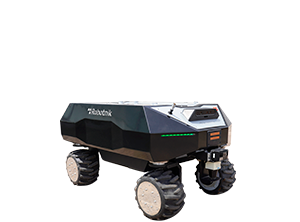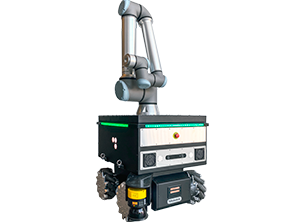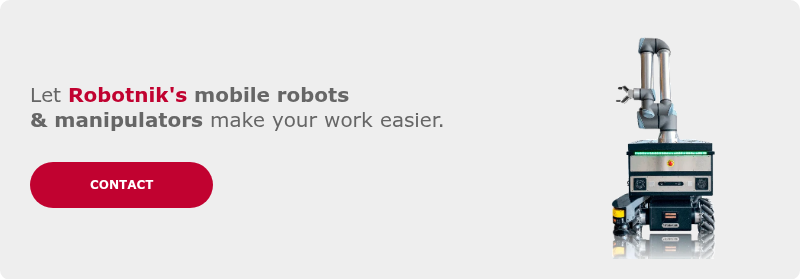The aerospace sector is undergoing a crucial phase of evolution, as highlighted by several recent reports. One example is the Future-Ready Skies 2025 study by Tata Consultancy Services (TCS), based on a survey of more than 300 executives across North America and Europe. The report describes an industry immersed in deep technological and organizational transformation.
According to TCS, traditional manufacturing standards are being replaced by more agile and resilient models, where supply chains are redesigned and maintenance operations evolve from cost centers into strategic value generators.
The report anticipates that within the next five to seven years, around 40% of aerospace production will be carried out through advanced processes supported by intelligent robotics, data analytics, and artificial intelligence. Furthermore, 70% of advanced air mobility companies are already implementing projects to accelerate this transition, transforming their infrastructure, scale, and business models.
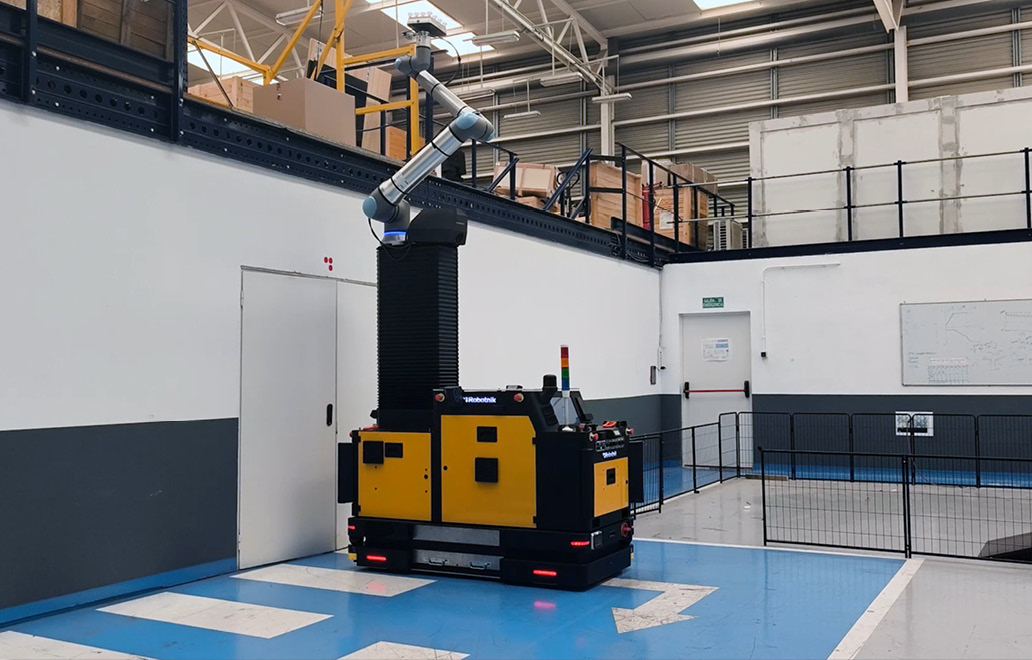
The adoption of robotic solutions that combine mobility and high-payload handling is becoming a strategic factor for competitiveness and differentiation in aerospace manufacturing.
This is clearly demonstrated by the case of MTorres, an international leader in automated assembly solutions for the aerospace industry, which has integrated the RB-ROBOUT+ Autonomous Mobile Manipulator, developed and manufactured by Robotnik, into its facilities.
HANDLING AIRCRAFT COMPONENTS: THE AUTOMATION CHALLENGE
One of the most demanding areas in terms of precision and logistics is the handling and assembly of large structures, such as fuselage sections, wings, spars, and assembly jigs which require exact control of positioning, alignment, and fixation. Traditionally, these operations involved numerous operators, cranes or lifting systems, and complex manual work sequences.
The current trend is to equip aerospace manufacturing plants with more flexible, safer, and automated processes, capable of adapting to production variants, new aircraft models, and rapid ramp-ups without compromising traceability or quality.
The integration of high-payload mobile manipulators, such as the RB-ROBOUT+, represents a significant step toward a new paradigm: combining autonomous mobility and manipulation capabilities within a single platform.
MTorres, a global leader in automation solutions for the aerospace industry, has taken a strategic step by integrating the RB-ROBOUT+ Autonomous Mobile Manipulator, developed and manufactured by Robotnik, into its production environment.
Key features of this mobile manipulator include:
-
- Omnidirectional mobile base, capable of precise movement in any direction.
- Telescopic column with vertical lift of up to 800 mm, expanding the vertical working range.
- UR20 robotic arm (Universal Robots) with a 1,750 mm reach and 25 kg payload capacity.
- Optional UR30 arm for handling loads up to 35 kg.
- Advanced sensing, navigation, and safety systems enabling safe collaboration in shared human-robot workspaces.
Advancing automation in component handling adds significant value in terms of faster movements, greater positioning accuracy, reduced operator fatigue, and improved assembly repeatability, all of which directly impact the final product quality.
PRACTICAL APPLICATIONS OF THE RB-ROBOUT+ IN THE AEROSPACE ENVIRONMENT
The versatility of the RB-ROBOUT+ allows it to be deployed in a wide range of tasks within aerospace manufacturing facilities. Some of its key applications include:
1. Handling of large structural components
The UR20 arm, combined with the telescopic column, allows access to elevated or hard-to-reach areas, particularly useful in assembly, riveting, or sealing operations involving large fuselage or wing panels. The omnidirectional mobility ensures precise alignment of components, improving repeatability and reducing tolerance errors.
2. Collaborative assistance in assembly lines
The robot can work alongside human operators at assembly stations, transporting parts or tools between work areas and relieving operators from repetitive or physically demanding tasks. This reduces downtime and improves ergonomics, which is critical when handling bulky or heavy components.
3. Handling of heavy tools and fixtures
Aerospace operations often require large pneumatic or electric tools (e.g., precision drills, riveters, or clamping systems). The RB-ROBOUT+ can hold, position, or move these tools (up to 35 kg), allowing operators to focus on high-value tasks.
4. Mobile inspection and quality control
By integrating machine vision systems, 3D cameras, or measurement sensors, the robot can perform dimensional or visual inspections directly on the production floor. Its mobility enables it to move around large aircraft structures to verify tolerances, detect surface defects, or conduct repetitive measurements with high precision.
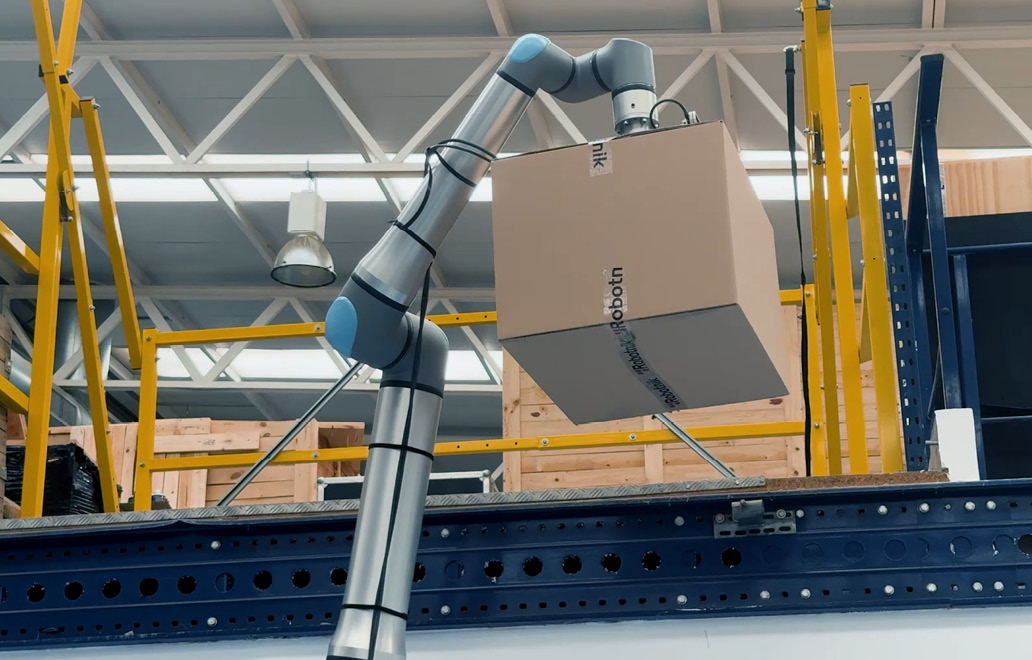
BENEFITS OF COLLABORATIVE MOBILE ROBOTICS IN AEROSPACE MANUFACTURING
Adopting mobile robotic solutions such as the RB-ROBOUT+ provides significant operational and strategic benefits in aerospace manufacturing:
-
- Increased productivity: Robotic platforms can operate continuously with extended shifts, minimizing idle time and unnecessary movement between workstations, thus improving production cadence.
- Enhanced precision and quality: Integrated vision, sensors, and motion control systems enable millimeter-level accuracy in assembly, adhesive application, and component positioning. This reduces human error and ensures consistent component quality.
- Operational flexibility: Robotnik’s robots are modular and based on an open ROS 2 architecture, making it easy to adapt to different aircraft models, production variants, or temporary tasks. This flexibility is essential in an industry that demands rapid commissioning times.
- Improved workplace safety: Automating repetitive, hazardous, or physically strenuous tasks reduces workplace injuries and enhances operator safety.
- Integration with intelligent technologies: As mobile collaborative robots connect with AI systems, machine vision, digital twins, and production analytics, they enable truly smart factories, where processes are optimized, maintenance is predictive, and response times are minimized.
- Traceability: By monitoring movement, positioning, and component handling while recording every operation, robots improve process traceability and support rigorous certification requirements.
AUTOMATING THE AEROSPACE SECTOR: CONTEXT AND EMERGING TRENDS
To conclude, several trends will define the future of aerospace manufacturing. All data point to more automated, connected, and intelligent production environments, paving the way for more sustainable and efficient operations.
Within this scenario, mobile robotics continues to play a key role. According to the report Aerospace Manufacturing in 2025: The Key Issues, published by the Royal Aeronautical Society, prototyping and advanced manufacturing technologies are evolving rapidly. In 2025, 3D printing stands as the most widely used technique in the sector (69.14%), followed by CNC machining (54.32%) and robotic manufacturing (50%). These results highlight a clear trend toward intelligent automation and the integration of robotic systems in aerospace production.
The implementation of the RB-ROBOUT+ at MTorres reflects a response to several major challenges that will continue to shape the sector in the coming years:
-
- Growing demand and higher production cadence: Increasing air traffic and the post-pandemic recovery are driving the need for expanded production of aircraft components such as fuselages and wings. Automation enables scalability and faster response times while maintaining quality and efficiency.
- Labor shortages and rising costs: The aerospace sector relies on highly specialized operators. The limited availability of such skilled labor, especially in high-cost regions, makes collaborative and mobile robotics essential to fill gaps and enhance human capabilities.
- Rising quality and traceability requirements: Aircraft contain millions of precisely manufactured components. Automated systems ensure consistency, precision, and process traceability, essential for meeting strict certification and safety standards.
- Shift toward smart, connected factories: Aerospace plants are steadily transitioning toward Industry 4.0 models, integrating IoT sensors, data analytics, digital twins, and collaborative robotics. This requires coordinated engineering efforts to interconnect all stages of production.
- Productive flexibility: As aircraft lifecycles shorten and customization grows, mobile robotic systems enable rapid adaptation to new configurations or model variants without major infrastructure changes.
FAQs about robotics in the aerospace industry
Mobile robotics enables the automation of complex tasks such as handling large aircraft components, transporting tools, or performing quality inspections. Thanks to its precision, autonomy, and ability to collaborate safely with human operators, it improves productivity, assembly quality, and workplace safety while reducing cycle times and ergonomic risks.
The RB-ROBOUT+ combines omnidirectional mobility, high-payload manipulation, and advanced navigation and safety systems. This integration allows precise and efficient performance in assembly, inspection, or handling tasks, adapting to different processes and aircraft models. Its open ROS 2-based architecture also facilitates seamless integration with other industrial systems.
According to organizations such as the Royal Aeronautical Society and the International Federation of Robotics (IFR), aerospace manufacturing is moving toward more automated, connected, and intelligent production environments. Technologies like artificial intelligence, machine vision, and collaborative robotics will continue driving more flexible, sustainable, and fully traceable manufacturing ecosystems.
